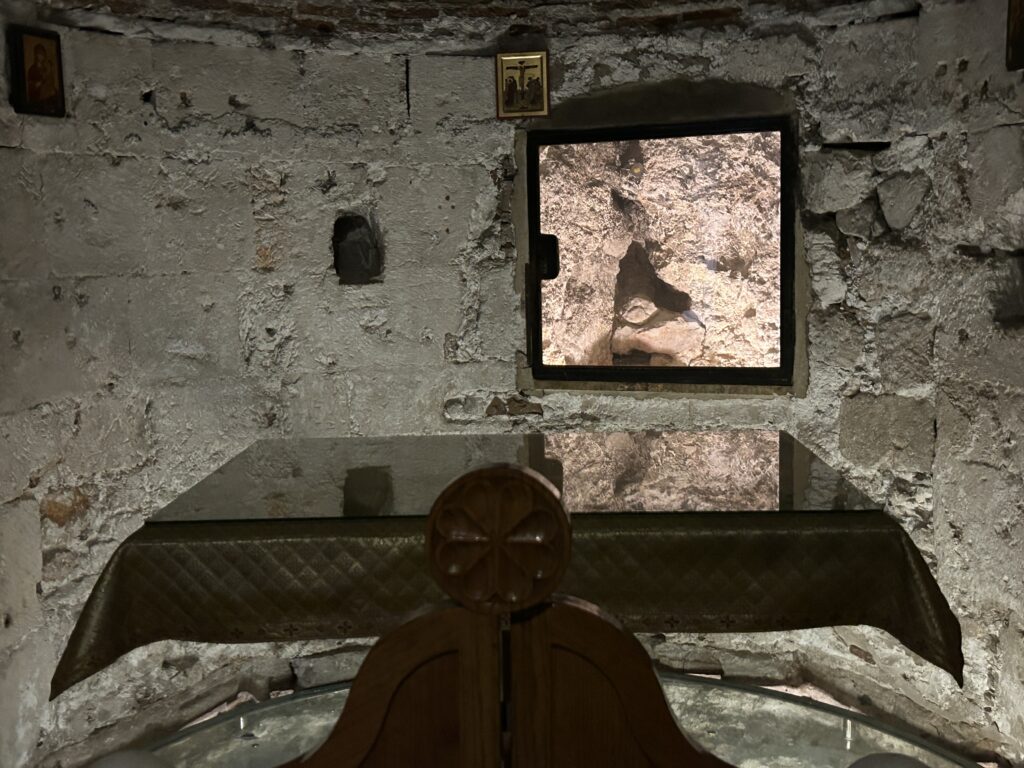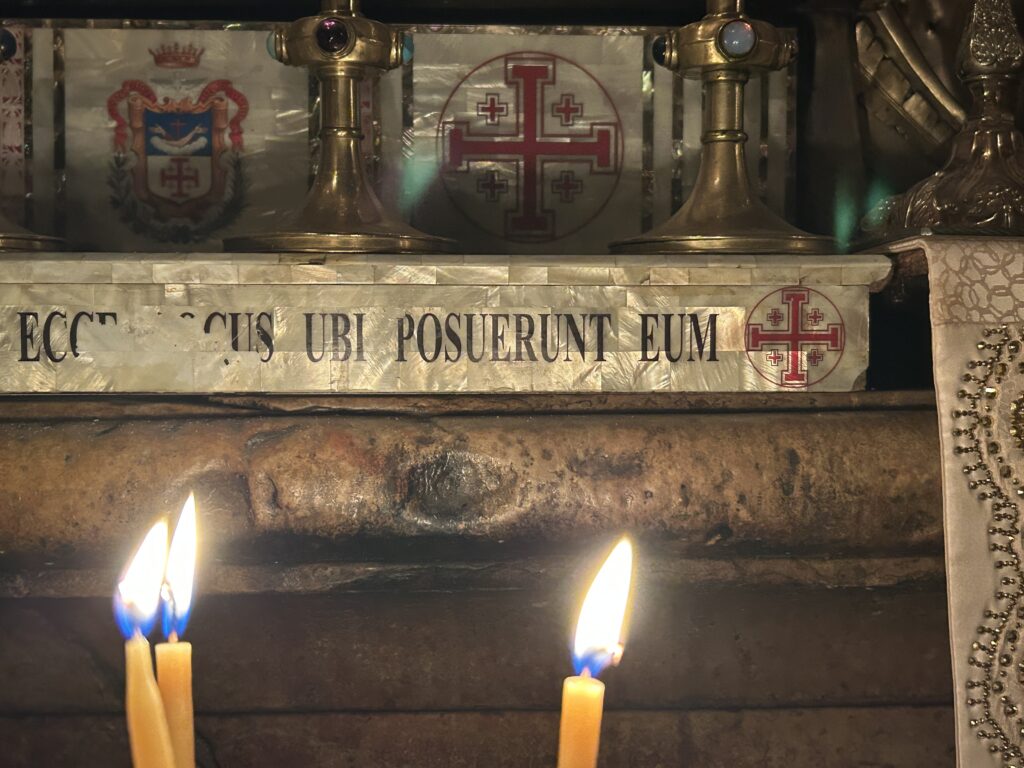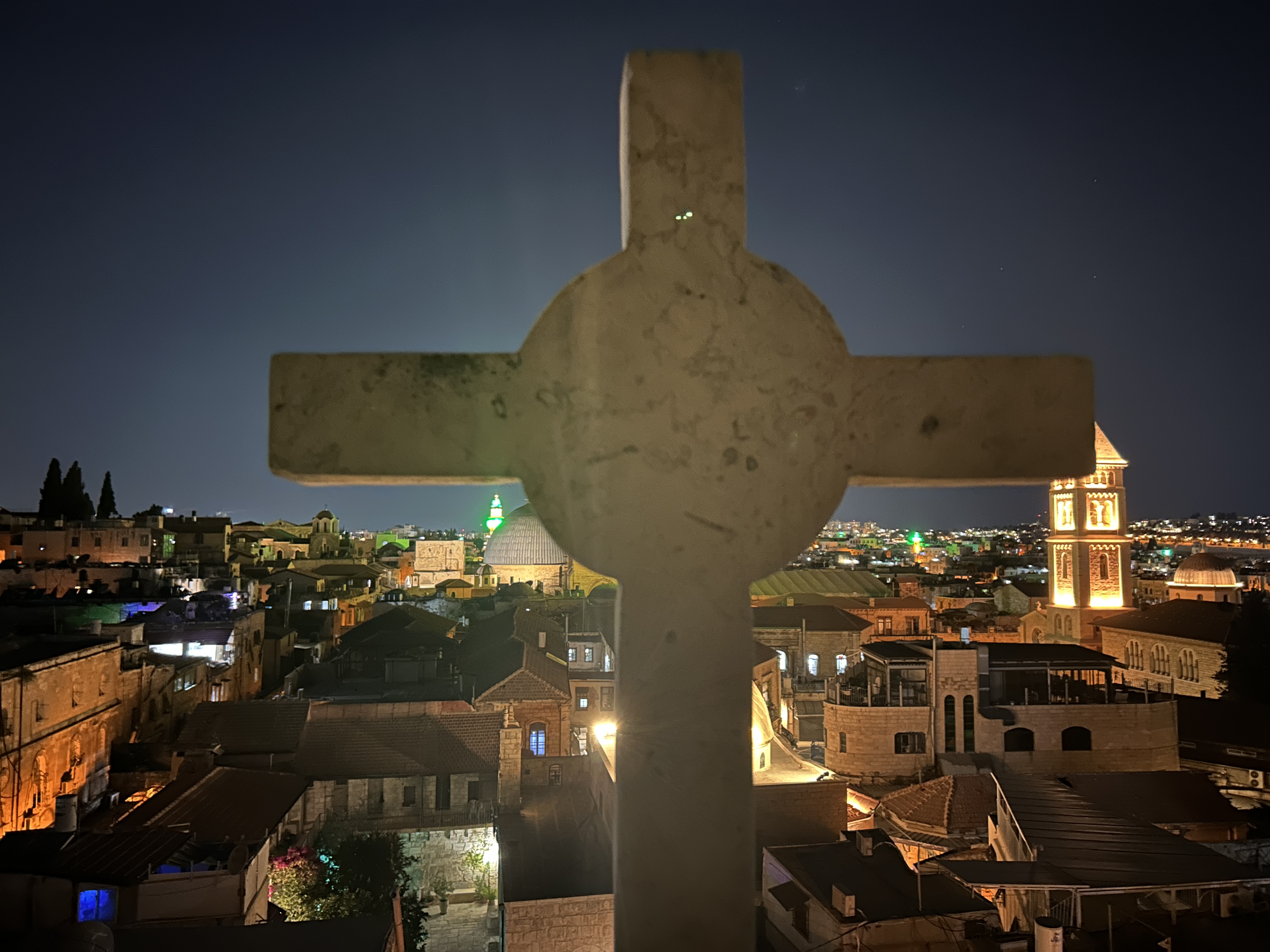I didn’t publicize this much on social media, but I took July 2025 as a retreat in the Holy City of Jerusalem. I knew that (due to the war) there wouldn’t be many tourists there. And I was right. I lived in the Old City with some Eastern Catholics, only about 250 meters from the Church of the Resurrection (aka the Church of the Anastasis, aka the Church of the Holy Sepulchre.)
The above picture is the stunning view from my balcony at night. From that balcony I could see everything from the Anastasis to the Mount of Olives. The grey dome in the middle of the picture is the Church of the Anastasis. It’s the actual site of Christ’s Resurrection.
Most people who have never been to the Holy Land do not realize that Church has about twenty different chapels under a single giant roof. The two most important of these are: 1) The Altar of Calvary/Golgotha. I wrote about that site here and what it has to do with the priesthood. (It is strangely found on the second floor of the Church where you have to go up a bunch of stairs.) 2) The Tomb of the Resurrection. I wrote about my first visit to that chapel here and the experience I had there in 2009.
Normally, the Greek Orthodox monks shuffle people in and out of those two chapels at high speeds because of how many tourists visit the sites of Our Lord’s life. But because there were so few tourists, I could go to these altars several times a day if I wanted. (I brought all your July prayer intentions here if you emailed or texted me this summer.)

I’m going to write a lot about those two major chapels in the Anastasis Church, but one of the more unknown of twenty chapels is the above chapel of Adam. It is located directly under the Chapel of Golgotha. (Remember above I wrote that Golgotha is on the second floor.) Thus, the chapel of Adam is on the main floor. But most people do not know what happened at this chapel. These words of 4th century St. Jerome who lived in the Holy Land give you a clue:
“Tradition has it that in this city, nay, more, on this very spot, Adam lived and died. The place where our Lord was crucified is called Calvary, because the skull of the primitive man was buried there. So it came to pass that the second Adam, that is the blood of Christ, as it dropped from the cross, washed away the sins of the buried protoplast, the first Adam, and thus the words of the apostle were fulfilled: Awake, you that sleep, and arise from the dead, and Christ shall give you light.”—St. Jerome, Letter 46.

Yes, you read that correctly. Adam was buried in the middle of modern-day Jerusalem, right in the Old City, right in the modern-day Church that contains the literal and geographic site of Christ’s own death and resurrection. In fact, Christ was crucified directly above the burial site of Adam, and those two chapels maintain that historical fact even to this day! Again, the above picture reveals the location where Adam’s skull was buried for centuries. (You won’t see his skull in there anymore, but it was apparently there at some point.)
This is one reason why Golgotha means “place of the skull.” It’s not because Christ’s skull was placed there, but because Adam’s skull was placed there (presumably with his whole body.) A new friend out there (a convert from Judaism to traditional Catholicism) showed me around these locations. I asked him if this is also where the Garden of Eden was. He calmly and wisely reminded me that the Cherubim with the flaming sword prohibited Adam from ever returning to the Garden, so it couldn’t be there. I was humbled by the insight of a new convert from Judaism to Catholicism, but he was absolutely correct: This was the death-site—not the life-site—of the first Adam.
But it also became the resurrection-site for the Second Adam, Jesus Christ. Jesus Christ conquered death at the very site where Adam (our first father who brought us original sin and death) himself died with all of us unfortunately in tow. The Resurrection of Jesus Christ was the chosen method of God before all of time in the Holy City of Jerusalem where the Eternal Word would be conquering death upon the burial site of Adam.

Tomb of the Resurrection: Ecce locus ubi posuerunt eum.—Mk 16:6 (“Behold the place where they laid Him.”)
